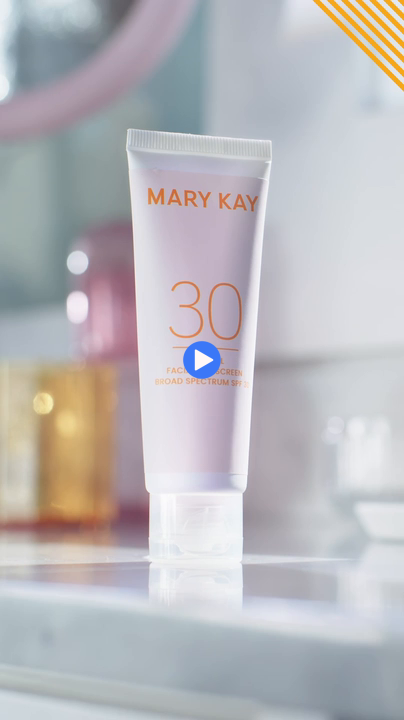|
A 100% Mineral sun care option from Mary Kay is finally here! Mary Kay Mineral Facial Sunscreen Broad Spectrum SPF 30 has a lightweight, low-shine formula powered by zinc oxide. Watch the video below to learn the basics of mineral sunscreen!
|  |
|
MINERAL SUNSCREEN 101
Mineral sunscreen, also known as physical sunscreen, offers sun protection using chemical-free active ingredients such as zinc oxide or titanium dioxide to shield your skin from the sun. In our new Mary Kay Mineral Facial Sunscreen Broad Spectrum SPF 30, the zinc oxide works by blocking both UVA and UVB rays. When you apply physical sunscreen to your skin, the mineral-based particles form a protective layer that bounces UV rays off your skin, preventing them from causing skin damage. Our new mineral sunscreen is non-comedogenic and fragrance-free making it less likely to cause irritation or allergic reactions. It is also suitable for daily use on all skin types, including acne-prone and sensitive skin.
What is zinc oxide?
Zinc oxide is a mineral that is a white powder in its natural state. It's commonly used in mineral sunscreens as the active ingredient protecting against both UVA and UVB rays. Its ability to block out both types of sun rays make it a highly effective broad spectrum SPF option. As a bonus, zinc oxide is known to offer protection from blue light – another source of premature aging.
Tip! How to avoid white cast:
Mineral sunscreens have advanced to provide a natural finish that suits various skin tones and skin types. Although a slight white tint may be evident right upon application, due to the zinc oxide, this can be easily prevented by using it correctly on well-moisturized skin. As it dries, it leaves a shine-free finish. Ensuring that your skin is well-hydrated before applying mineral facial sunscreen will enhance the overall experience, regardless of your skin type. |
|
|
|
|